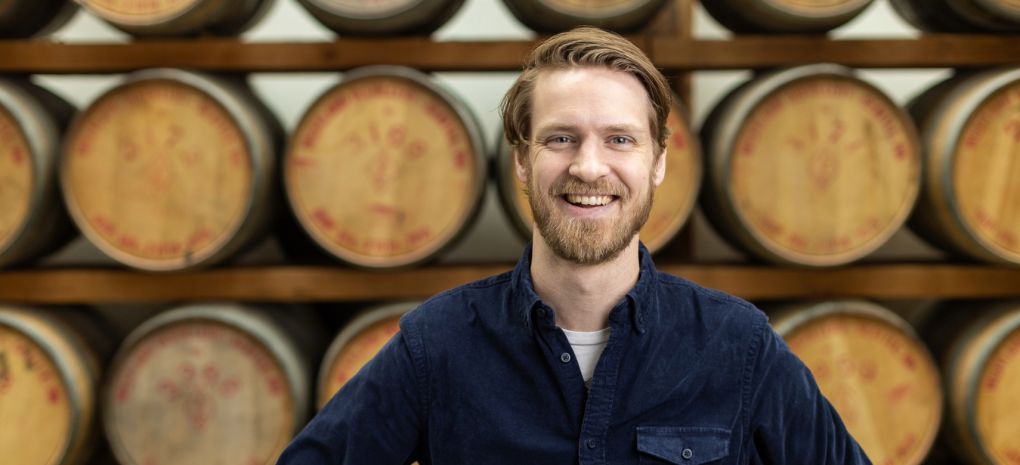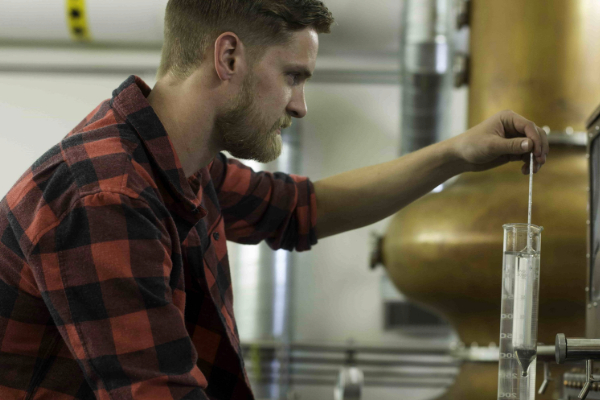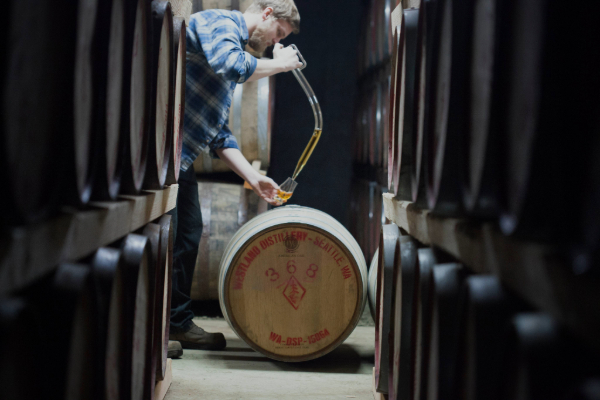
20/11/2024 Discover how Pederson’s deep-rooted passion for craft spirits led him to becoming one of the most respected figures in the American whiskey scene
Growing up in a family of restaurateurs, Tyler Pederson was immersed in the world of food and drink from a young age. It was during these formative years that his fascination with spirits began to take shape. Today, as Master Distiller at Westland Distillery, Pederson is at the helm of one of America's most respected distilleries, where he oversees the team responsible for daily mashing and distillation, managing our supply chain, evaluating efficiencies, and forecasting future production. In this interview with Bartender Spirits Awards, he shares his journey, his philosophy, and his vision for the future of American whiskey.
Tell us a little about your background and journey into distilling
I developed a love for beer and whiskey at a young age, leading me to start homebrewing and learning about distillation. Before finishing school, I took entrepreneurship courses and started drafting a business plan for a craft distillery. When attending the American Distilling Institute's annual conference in 2009, I met someone starting a new bourbon company who later offered me a job as the Market Manager for Tipton Spirits. I was responsible for marketing the brand in Washington and Oregon, hosting tastings, classes, and events. However, I had to resign after two years when Washington State privatized liquor sales. While I waited for my next distilling opportunity, I bartended at The Palace Kitchen, where I heard about a tour at Westland Distillery through the local bartenders' guild. The moment I saw the distillery, I knew I wanted to work there, so I visited the next day with my resume. Though they initially couldn't hire me, two weeks later their mashman resigned, and I was called in. I’ve been with them for 11 years now.
Tell us what your current role as Master Distiller looks like.
Besides running stills and taste-testing our whiskeys, I devote a significant amount of my time to maintenance and repair work, as distilleries have thousands of components that need a lot of care to keep running efficiently. I also represent the distillery through interviews, market visits, tastings, and master workshops.
What inspired you to become a distiller?
I have always loved both art and science, but I never found the right outlet for those passions. Then, one day while bartending, I glanced at the complex array of spirits behind the bar. It hit me that distilling was the perfect blend of science—producing alcohol—and the art of crafting flavors. In school, ecology was my favorite subject because I was fascinated by the intricate interactions between biological systems. In many ways, whiskey-making mirrors that complexity. It involves everything from plant breeding and farming to forestry and the entire process leading up to the consumer. It’s a web of interactions and careful choices that I find truly fascinating.
[[relatedPurchasesItems-31]]
What are some of the most important skills for a distiller?
A distiller must be patient and detail-oriented. The hours are long, and the work can be repetitive, so it’s essential to have a personality that thrives on consistency. A natural curiosity is also invaluable—there's always something new to learn in this field.
What is the hardest part of a distiller's job?
The biggest challenge for a distiller is maintaining consistency amidst constantly changing variables. Raw materials can vary daily or from batch to batch, requiring careful adjustments to production processes. A distiller must be adaptable to shifts in the quality of incoming ingredients while also keeping a close eye on the demands for the final products. It's easy to get attached to the processes you're deeply involved in, but success ultimately depends on aligning with consumer demand and adapting to the business's needs.
How do you think a distiller can help in driving marketing and sales personally?
Educating and engaging with consumers is one of the most effective ways to boost sales. Even without leaving the distillery, you can offer in-depth tours, exclusive tastings, and create digital content for social media. Other than that, sharing behind-the-scenes snapshots of your workday and reposting company updates are easy ways to expand the brand's reach and connect with a wider audience. When the schedule allows, you can also take the time to work at whiskey festivals, host masterclasses, and do staff trainings, which are all excellent ways to extend your influence and get a better perspective on what buyers are looking for.
Also read: Watch out for these 15 Award-Winning Whiskies from the Bartender Spirits Awards 2024

Image Title: Master Distiller Tyler Pederson
Take us through your process of blending.
Blending is a complex process that varies based on the product. For our flagship whiskey, we may marry over 70 casks per batch. Nosing and tasting every individual whiskey would lead to palate fatigue, so we use a more efficient approach for large batch blends. We have a solid understanding of how specific spirit types in different casks develop over time, allowing us to predict their contributions to a larger blend. Barrels with similar profiles—malt-forward, light and ester-forward, rich and smoky—are grouped together. We then create larger blends from these sub-blends to achieve the desired profile. Sensory evaluation is done at this stage, and if adjustments are needed, the sub-blends are modified and re-blended. This method helps us reach the final result quickly, reviewing only a fraction of the samples. For smaller blends, evaluating each cask is useful, but some flavor changes after blending are difficult to predict.
How do you create complexity in the fermentation stage?
Fermentation is a key stage for adding flavor to distilled spirits. Unlike the Scottish approach, which relies on a common yeast strain across distilleries, we drew inspiration from the Pacific Northwest's brewing scene. We use a Belgian Saison yeast known for producing fruity esters. This strain can generate high levels of esters and alcohols, so we control fermentation temperatures at 26°C with glycol-jacketed, closed-vessel tanks. Each batch uses 3.5 kg of yeast per 10,000 L of wort. We don't boil the wort before fermentation, allowing Lactobacillus bacteria to grow after the primary fermentation. A five-day fermentation enhances the ester profile for distillation. Once complete, we cold-crash the vessel to settle the yeast, leaving it behind to avoid sulfur notes. Our fermentation starts consistently at a gravity of 1.065, creating an ideal environment for yeast growth and beneficial metabolites.

Image Title: Tyler Pederson, Westland Distillery
What steps do you take to become more sustainable?
We source over 96% of our grain locally to lessen transportation's carbon imprint. This is possible due to our strong ties with regional craft houses and small grain farmers in Washington State, who helped us choose malts that require low input to grow. We even sponsor a WSU Breadlab PhD student to develop low-input, organic, climate-resilient barley varieties. At the production side, operations have been tightened for five years to maximize efficiency and minimize waste, fuel, power, and water. We are one of the first Energy Star and B Corp certified distilleries in North America and scored the most points. It was all possible with the help of Melanie Gourlie, our compliance and QA manager and Icons of Whiskey 2024 Global Sustainability Officer of the Year, who worked hard to make these achievements possible.
How do you take care of production waste?
We've always sent our spent grain to a nearby dairy farm for cattle feed. Recently, we installed a wastewater management system that lets us pretreat all effluent before it's sent to our local municipal treatment plant. This system allows us to control dissolved solids, pH, and temperature while also capturing waste heat to power other processes in the facility. Additionally, we're fortunate to have strong recycling and composting programs in our city. and we carefully minimize waste in our orders and packaging design, aiming to keep our production facility as sustainable as possible.
Also read: How Are Distilleries Tackling Their Waste Problem?
How do you explore new markets for your spirits and focus on business development?
The exploration frequently begins spontaneously when we meet someone traveling from another area of the world and they tell us that there is a fantastic community of individuals who may find our work appealing. We do market research determining the size of the prospective opportunity before deciding if we want to collaborate with local ground teams and launch our product there. It frequently boils down to the ease of market entry, which is influenced by state rules and distribution networks.
Header image by Tyler Pederson
Related Links
Three Top Craft Spirits Importers in the USA
Nine Spirits Trends You Can Expect in the 2025 U.S. Drinks Market



